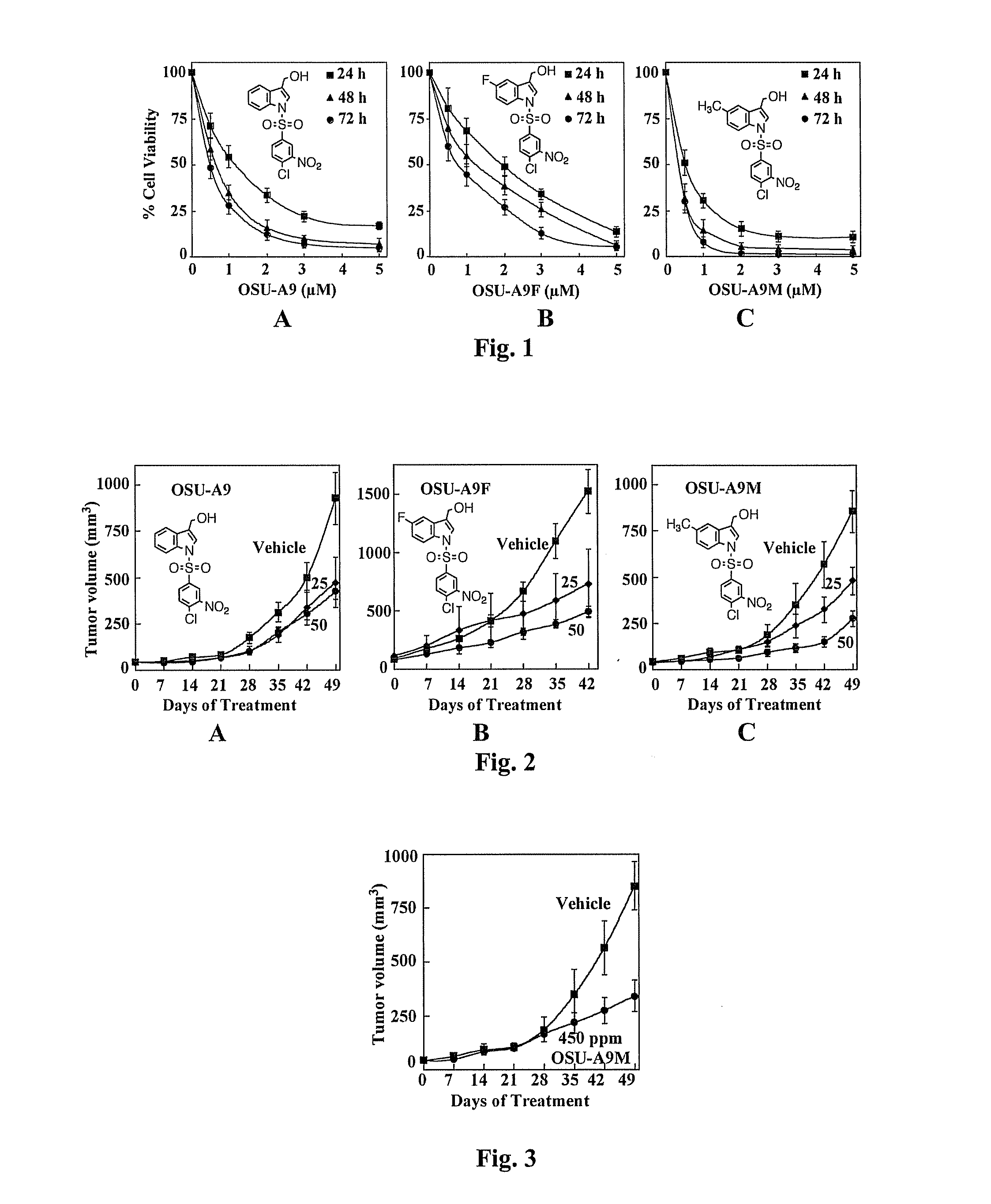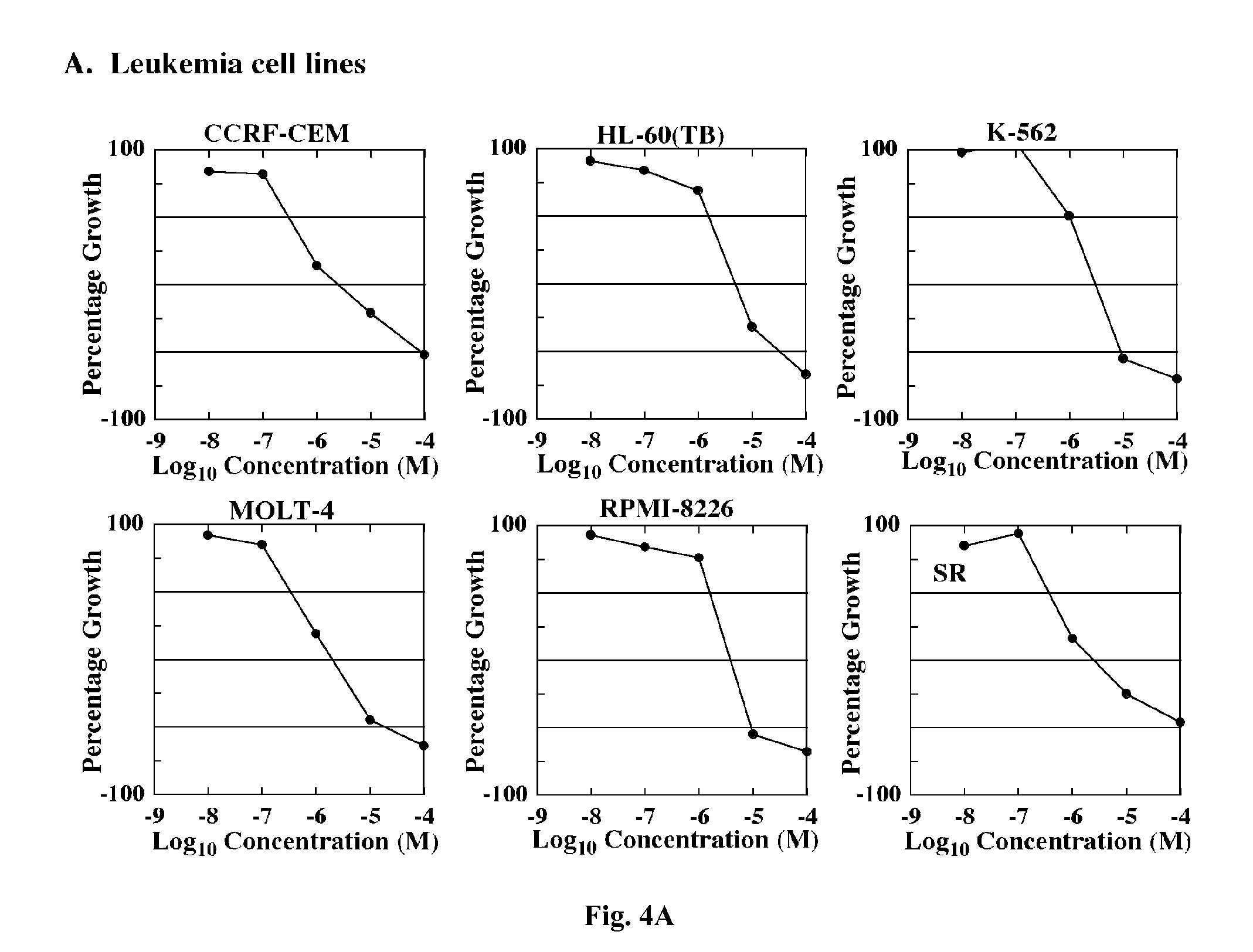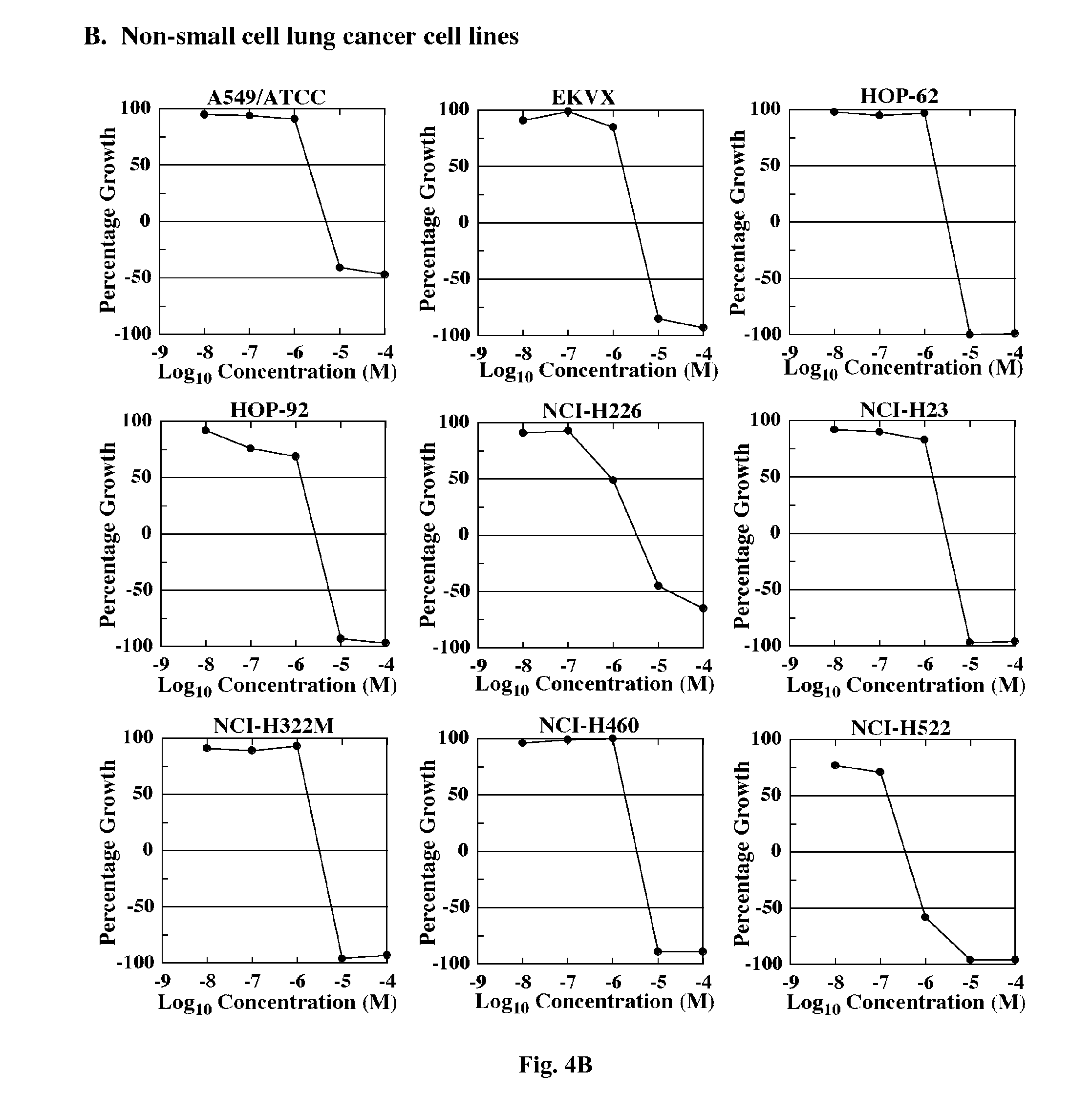Alkyl indole-3-carbinol-derived antitumor agents
an alkyl indole and antitumor technology, applied in the field of alkyl indole3carbinol-derived antitumor agents, can solve the problems of low in vitro antiproliferative potency, inconclusive results of carbinol inhibiting tumorigenesis, and inability to prove whether one of them can be solely effective, and achieve the effect of effective cancer therapy
- Summary
- Abstract
- Description
- Claims
- Application Information
AI Technical Summary
Benefits of technology
Problems solved by technology
Method used
Image
Examples
examples
[0052]The invention will be further described by reference to the following detailed examples. These examples are offered to further illustrate the various specific and preferred embodiments and techniques. It should be understood, however, that many variations and modifications may be made while remaining within the scope of the present invention.
example i
Synthesis of OSU-A9M
[0053]
[0054]Reagents. Methyl-1H-Indole-3-carbaldehydes were used as the starting material to synthesize the methyl 1H-indole-3-carbinol derivatives (Sigma Aldrich). Other alkyl-1H indole-3-carbaldehydes can readily be used to prepare other lower alkyl derivatives. The identity and purity of these synthetic derivatives were verified by proton nuclear magnetic resonance, high-resolution mass spectrometry, and elemental analysis, and were typically present with a purity of ≧99%. For in vitro experiments, these agents were dissolved in DMSO at various concentrations and were added to cells in medium to provide a final DMSO concentration of 0.1%.
[0055]1-(4-Chloro-3-nitro-benzenesulfonyl)-5-methyl-1H-indole-3-carbaldehyde. 5-Methyl-1H-indole-3-carbaldehyde (159.18 mg, 1.0 mmol) was treated with NaH (24 mg, 1.0 mmol) in THF at 0° C. for 30 min, sulfonyl chloride (256.06 mg, 1.0 mmol) was added slowly. The reaction mixture was warmed up to and stirred at room temperature...
example ii
OSU-A9M Exhibits Greater In Vitro Potency than OSU-A9 and OSU-A9F in Suppressing the Cell Viability of PC-3 Cells
[0057]The activity of OSU-A9M versus its parent compound A9 ([1-(3′-nitro-4′-chlorobenzenesulfonyl)-1H-indol-3-yl]-methanol) and its fluorinated counterpart OSU-A9F ([1-(4-Chloro-3-nitro-benzenesulfonyl)-5-fluoro-1H-indol-3-yl])-methanol in suppressing the cell viability of PC-3 prostate cancer cells was compared using the MTT [3-(4,5-dimethylthiazol-2-yl)-2,5-diphenyl-2H-tetrazolium bromide] assay. The results are shown in FIG. 1. Cancer cells and PrECs were grown in 5% FBS-supplemented RPMI 1640 medium or 5% FBS-supplemented prostate epithelial growth medium, respectively, in 96-well, flat-bottomed plates for 24 h, and then exposed to various concentrations of test agents in the same medium for the indicated time intervals. Controls received DMSO vehicle at a concentration equal to that in drug-treated cells. At the end of the treatment, the medium was removed, replaced...
PUM
| Property | Measurement | Unit |
|---|---|---|
| temperature | aaaaa | aaaaa |
| concentration | aaaaa | aaaaa |
| wavelength | aaaaa | aaaaa |
Abstract
Description
Claims
Application Information
 Login to View More
Login to View More - R&D
- Intellectual Property
- Life Sciences
- Materials
- Tech Scout
- Unparalleled Data Quality
- Higher Quality Content
- 60% Fewer Hallucinations
Browse by: Latest US Patents, China's latest patents, Technical Efficacy Thesaurus, Application Domain, Technology Topic, Popular Technical Reports.
© 2025 PatSnap. All rights reserved.Legal|Privacy policy|Modern Slavery Act Transparency Statement|Sitemap|About US| Contact US: help@patsnap.com



